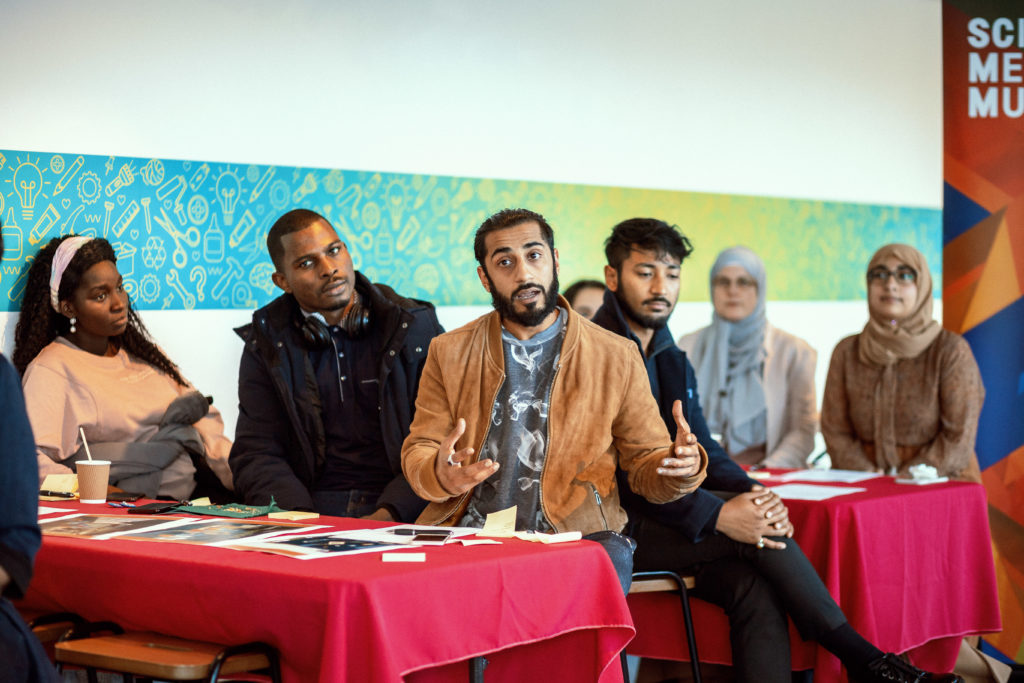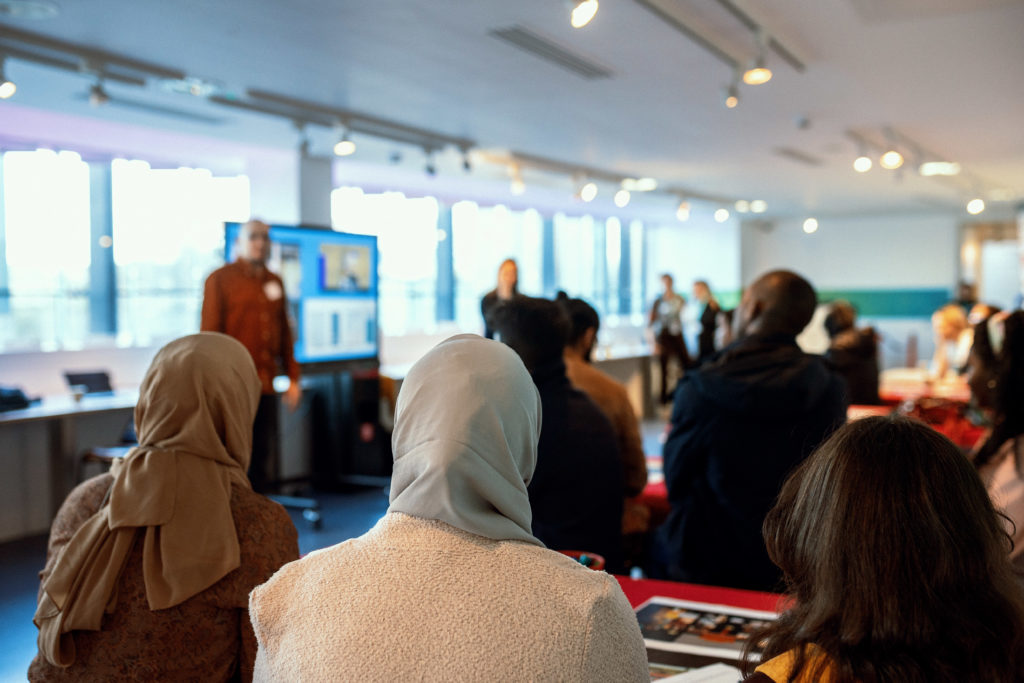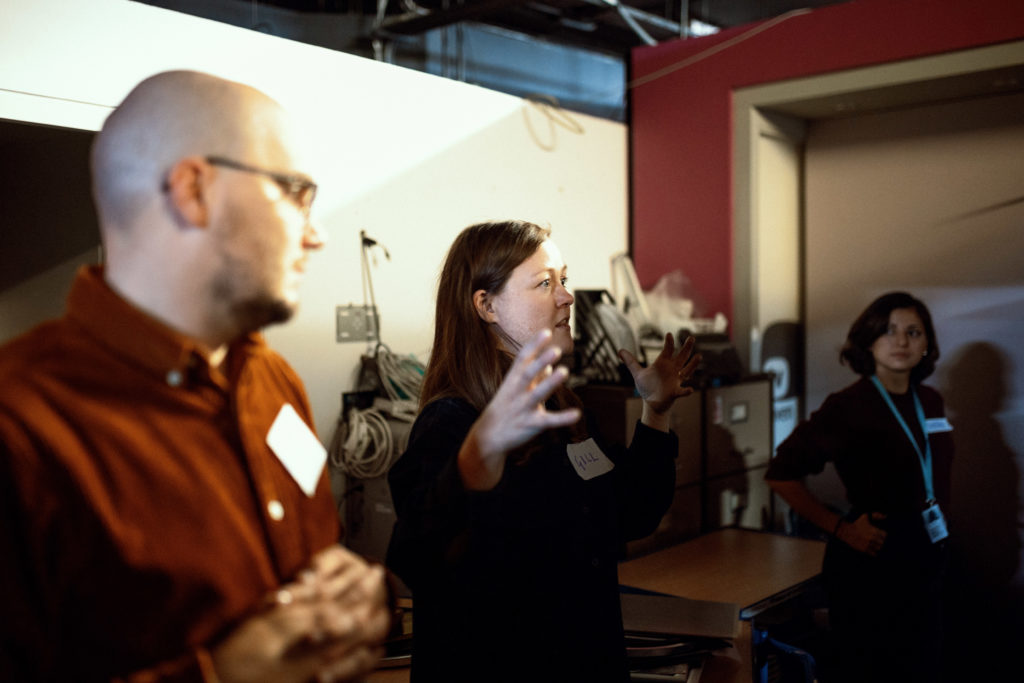It’s been five months since our first community consultation for the Sound and Vision project. This summer, we invited Bradford community leaders and representatives to share their perspective on plans to redevelop two new permanent galleries—you can read more about the launch of community consultations here.

These initial consultation sessions were remarkably successful, generating great ideas, thoughtful conversations and new perspectives to consider. We have since carefully catalogued and discussed every comment and suggestion, working them into our strategies for developing Sound and Vision. We are especially focusing our attention on the recurring themes of Representation, Accessibility and Interactivity.
The consultation sessions helped us identify specific gaps in Representation both in the stories told and in the people we reach. We are striving to develop the Sound and Vision galleries with and for the people of Bradford, collecting oral histories, looking for untold stories and searching beyond the usual narratives. Through mapping the galleries and refining the interpretation ideas, we are shifting the spotlight onto the people—the inventors, the users and, ultimately, the spectators—who will all become part of the display. We aim to make the museum a place where everyone will be able to find a reflection of themselves in the way our collections are showcased.
Gaining first-hand perspectives has also been exceptionally valuable for addressing Accessibility concerns, helping us to identify a multitude of issues. Physical access needs are an incredibly important element to consider at the design stage, but we have learnt that ‘accessibility’ entails so much more than just physical access. We are addressing all the barriers identified through community-driven advice. Plans for Sound and Vision consider sensory needs with the inclusion of tactile models, audio information and written transcripts for assisting visitor exploration, as well as guided tours for those who would rather explore as part of a group. The museum has also formed an Access Panel to consult with people with lived experiences of various access needs.
Making the museum a fun and engaging place to learn by doing has been an almost unanimous demand throughout our consultation sessions. When Interactivity is discussed, the imagination runs wild! A lot of feedback mentioned implementing Wonderlab-style activities and engaging with the gallery by interacting with the collections.
The latest designs for Sound and Vision introduce Key Moments—interactive highlights unlocking each story. They provide a snapshot of the gallery’s purpose and key messages if a visitor is only there for a short time. Another proposed feature is Heightened Story—opportunities for immersion in each space that create a change of pace in the visitor journey. When the new galleries are open to the public, there will also be programme of activities and shows to compliment this content.

Community consultations are ongoing, with a round of sessions taking place at each key stage in the development of the new galleries. The most recent community consultations held in September were centred around the designs and concepts created by Agents of Change, the architects commissioned to design the galleries. We hosted a small session online, and a slightly larger group at the museum.
Whether online or in-person, attendees were presented with eye-catching plans, layouts, and graphics representing two of the future gallery spaces. These included a space called Innovation, offering the visitor a journey through scientific discovery in media; and a space currently called Everyday, showcasing the technology that has entered our lives and had a significant impact on us as individuals and as a society.
We have toured areas of the museum where the new gallery spaces will be installed, invited the attendees to discuss their relationships with technology and certain objects, and asked how they tend to interact with gallery content in different contexts. Once again, we received remarkable comments that provided us with fresh perspectives on our plans.

Seeing these spaces take shape has inspired a great deal of input on the finer details, from placement of objects to accessibility features. The attendees were excited to share what technology such as photography means to them and their families, and what would make their interaction with the galleries a one-of-a-kind experience—for example, ways the spaces could recreate the feeling of being the “main character” in your story that modern media allows us to experience.
Your insight and advice are shaping the future of the museum—and we are working on an offer that makes community consultations a mutually beneficial partnership. Preparations are now starting for the next round of consultation sessions, which will take place in February 2023.